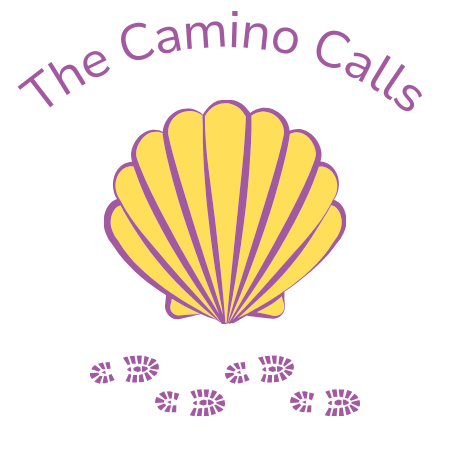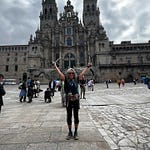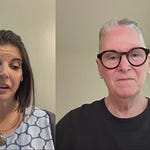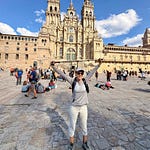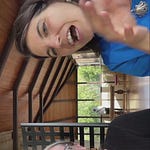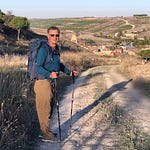In this episode of "Camino Conversations," host Rebecca Weston interviews Lois Bertram, who was 73 when they walked the 520-mile Camino Francés from Saint-Jean-Pied-de-Port to Santiago de Compostela and Finisterre. Lois shares her journey from inspiration to completion, practical advice for pilgrims, cultural surprises, and long-termreflections. The discussion includes audience questions on health, gear, planning, and daily life on the trail.
Topics covered:
Lois's Inspiration and Decision to Walk
Lois first learned about the Camino from Shirley MacLaine's book in the 1980s, drawn to its solitary nature. Meeting Rebecca, who had completed it and offered her an invitation, shifted her mindset from "I'm too old" to "I can do this."
They emphasize discussing expectations with travel partners, as the Camino is an "adventure" like a marriage, with hard times (e.g., fatigue, hunger). Mismatched ideas about pacing can strain relationships—some couples separate on the trail but reunite later.
Preparation and Training
Training: Lois walked 5 miles daily in flat Ohio. It built strength, though the Camino's varied terrain (gravel, ruts, hills) required adaptation. Body adjusts over time; longer Caminos (multiple weeks) allow for increased daily mileage.
Gear Recommendations:Hiking Poles: Essential for stability on uneven paths; Lois recommends two lightweight poles, adjustable for ups/downs. Learned proper use from experts at REI.
Clothing: Pack minimally (two of everything), but choose quick-dry fabrics. Waterproof rain suit (pants and jacket) is crucial—September had rain, frost, and wet shoes. Use newspaper to dry shoes overnight.
Luggage: Initially planned to backpack but switched to sending packs via Spanish Postal Service (Correos - reliable, arrived early). Wore day packs with rain gear. Surprised by cyclists using luggage transport.
Laundry: Hand-wash or pay for services; private rooms may lack drying facilities.
Health and Safety
Health was a major concern at age 73 (falls, illness, no insurance). Positive experiences: French doctor visit for leg pain ($30, $12 prescriptions); pharmacies (green cross signs) handled minor issues like blisters affordably—nodoctor needed.
Recommend travel insurance for medical/evacuation coverage. Pharmacies cater to pilgrims (e.g., blister kits, knee braces). English not always spoken—learn basics.
Hydration/Bathroom: Fill water at potable fountains or buy it; breaks at bars. Avoid bathroom water if unsure.
On the Trail Experiences
Differences from "The Way" Movie: Film focuses on drama and people, not practicalities like sore feet, elevation (used charts to plan distances), or finding lodging.
Daily Life: Flexible planning—booked accommodations day-to-day via phone (challenging 10 years ago, easier nownwith more options). Not pre-planned to allow rest days or adjustments.
Surprises in Spain: Friendly locals (helped with directions, elevators); vibrant festivals (parades, bull runs, dancing—regional, e.g., Basque white/red attire). Family-oriented culture, with men actively involved with children. Noisy
nights—avoid main street rooms.
Sense of Time and Journaling: Felt detached; posted daily on Facebook with photos, later printed as a hardcover book.
Reflections 10 Years Later
Continued walking 5 miles daily; completed a half-marathon six months post-Camino.
Personal growth: Rediscovered solitude (lost in busy life), gained awareness of surroundings/adventures. Highlight: Standing at Muxía rocks, feeling part of the "cosmic world"—more profound than arriving in Santiago.
Advice: Hostels aren’t the only option on the Camino—private rooms with sheets/towels available. Adventure lies in uncertainty; suitable for older pilgrims with preparation.



